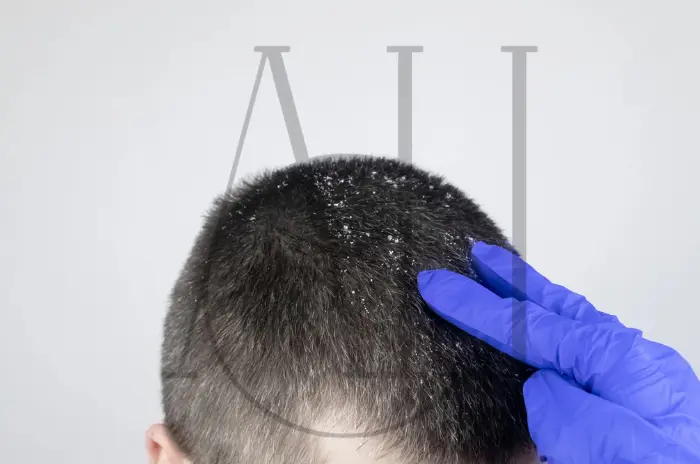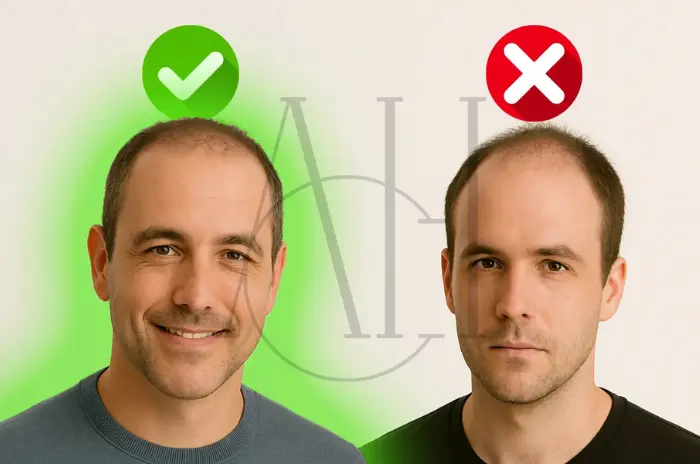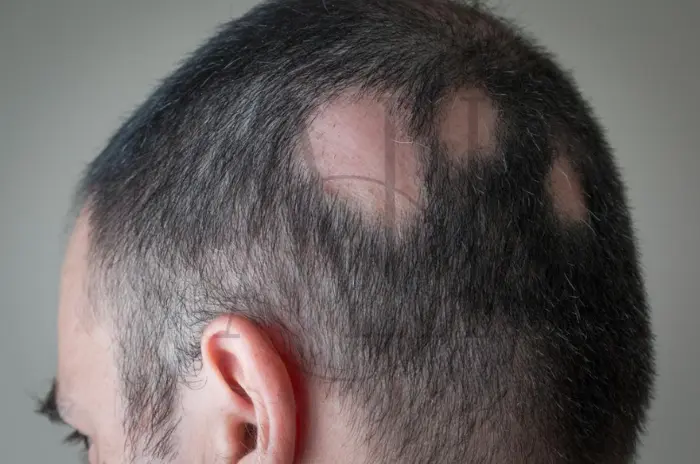Flaking, itching, and irritation on the scalp are common complaints, but not all flakes are created equal, especially when considering Dandruff vs. Dry Scalp. For many people, the issue lies with either dandruff or dry scalp. While both conditions involve flakes and itching, their causes and treatments differ significantly.
This detailed guide from Albania Hair, a trusted intermediary organization, will help you understand the difference between the two, their causes, symptoms, prevention, and effective treatments to restore a healthy scalp.
Table of Contents
ToggleWhat Is Dry Scalp?
A dry scalp occurs when the skin on your scalp doesn’t produce or retain enough natural oils, leading to irritation, tightness, flaking, and sometimes itchiness. Just like dry skin on other parts of your body, a dry scalp can result from various environmental, health, or lifestyle factors. It is typically not caused by infection or fungal overgrowth and usually does not involve inflammation unless scratched excessively.
How Does Dry Scalp Occur?
The scalp becomes dry when it lacks sufficient sebum (the natural oil produced by sebaceous glands). This oil is responsible for keeping the skin supple and maintaining the scalp’s barrier function. When the production of these oils drops or the oils are stripped away too frequently, moisture escapes, and the skin becomes flaky and irritated.
Common external factors like frequent shampooing, exposure to harsh weather, and using alcohol-based styling products can worsen the condition. Internal factors, such as age-related skin changes and hydration levels, also play a significant role.
Dry Scalp Causes
Dry scalp can be caused by a range of environmental conditions, aging processes, product choices, and internal health factors. Below is a more detailed look at the most common contributors to dry scalp:
-
Cold, Dry Air
Cold weather brings dry air, both outdoors and indoors due to heating systems. This significantly reduces the moisture content of the scalp. When exposed to such dry air regularly, the scalp loses hydration faster than it can replenish it, resulting in tightness, flakiness, and discomfort. Seasonal dryness is particularly common in winter months.
-
Aging
As people age, the production of sebum (natural oil) by sebaceous glands decreases. This results in not only facial skin dryness but also dryness of the scalp. Post-menopausal women and older adults are especially prone to this, often noticing flaking and increased scalp sensitivity without any changes to hair care routine.
-
Hair Products
Using shampoos that contain harsh sulfates (like SLS), or frequent application of styling gels, hairsprays, and mousses containing alcohol can strip away the scalp’s protective oils. These products often disturb the natural pH balance, leading to irritation and a weakened skin barrier, making the scalp more vulnerable to dryness.
-
Skin Conditions
People with underlying dermatologic conditions such as eczema, psoriasis, or seborrheic dermatitis may experience dry scalp as a symptom. These inflammatory skin conditions cause rapid skin cell turnover or flaking, and they often require targeted medical treatments for proper management.
-
Dehydration
Lack of internal hydration reflects externally on the skin, including the scalp. If your daily water intake is insufficient, your body cannot provide the skin cells with enough moisture, resulting in general dryness. Consistent hydration supports scalp elasticity, sebum production, and barrier function.
-
Environmental Factors
Factors such as prolonged exposure to UV rays, strong wind, pollution, or swimming in chlorinated or salt water can compromise the scalp’s outermost layer. These external aggressors strip the skin’s lipids and proteins, causing dryness, inflammation, and potential sensitivity.
Tip: Combine internal hydration with external protection (like hats and hydrating sprays) for complete scalp care during environmental extremes.
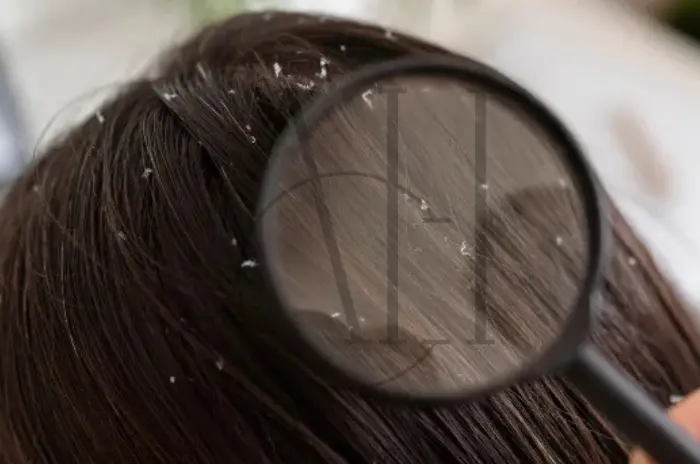
Symptoms of Dry Scalp Include
Understanding the signs of a dry scalp can help with early intervention before discomfort worsens or flakes become visible on clothing. Below are common symptoms that can indicate your scalp is lacking sufficient moisture:
-
Smaller, Dry Flakes That Are White
Dry scalp flakes are typically very small, fine, and powdery. They tend to fall off easily, especially during brushing or when scratching the scalp. These flakes are white and not oily, which distinguishes them from dandruff-related flakes.
-
Tightness of the Scalp
A dry scalp often feels tight, especially right after shampooing or exposure to dry environments. This sensation is similar to that of dry facial skin, and may even feel itchy or slightly painful during scalp movement.
-
Hair and Scalp That Feel Dry and Brittle
When the scalp loses moisture, it also impacts the hair roots and strands. The hair may become coarse, dull, frizzy, or break easily. In many cases, brittle hair signals an ongoing scalp hydration problem.
-
Tight, Uncomfortable Feeling Scalp
The skin of the scalp may feel as though it’s being pulled or stretched. This uncomfortable sensation is particularly noticeable during cold or windy weather and is typically relieved after applying oils or moisturizers.
-
Sensitivity or Itching Sensations on the Scalp
Dry scalp is commonly associated with mild to moderate itchiness. This may worsen after shampooing or in climates with low humidity. In some cases, scratching can lead to micro-tears or irritation, increasing the risk of secondary scalp infections.
How to Treat and Prevent Dry Scalp
-
Hydrating Shampoos and Treatments
Opt for sulfate-free shampoos that contain moisturizing agents such as:
- Aloe vera
- Coconut oil
- Shea butter
- Ceramides
- Glycerin
These ingredients help restore the moisture barrier and relieve tightness and flaking.
-
Scalp Serums
Look for leave-in serums rich in hyaluronic acid, panthenol (provitamin B5), or niacinamide. These active ingredients draw moisture into the skin and soothe inflammation.
-
Scalp Oils or Leave In Treatments
Apply nourishing oils like argan, castor, or tea tree oil once or twice a week. Massage into the scalp and leave overnight for deep hydration.
DIY Treatment Tip:
- Warm a mix of olive oil and coconut oil slightly, apply it to your scalp, and cover with a shower cap for 30–60 minutes before rinsing.
-
Avoid Over Washing
Shampooing more than necessary strips natural oils. Stick to 2–3 times per week unless your scalp is oily.
Prevention Tips for Dry Scalp
- Stay hydrated: Drink at least 8 glasses of water daily.
- Avoid harsh products: Use gentle, alcohol- and sulfate-free shampoos.
- Cover your head in harsh sun, wind, or cold weather.
- Use humidifiers during dry seasons.
- Limit hot showers, which can strip natural oils.
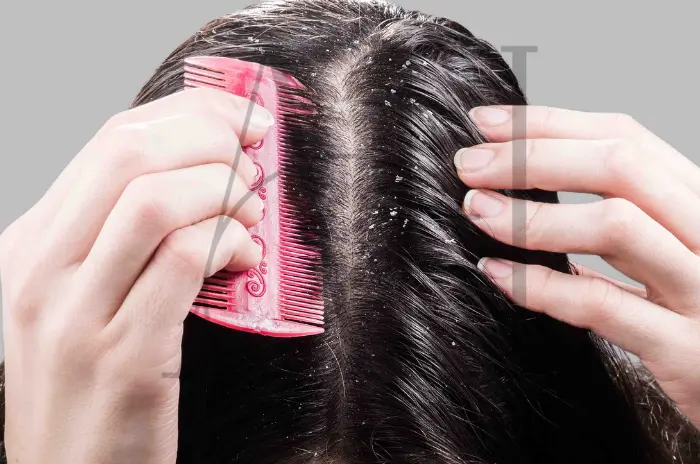
Prevention Tips for Dry Scalp
- Hydrate and moisturize regularly with water and nourishing products.
- Avoid over-washing, especially with harsh shampoos.
- Protect your scalp from wind, cold, and direct sunlight.
- Use gentle products that support the scalp’s natural oil balance.
What Is Dandruff?
Dandruff is a chronic scalp condition involving overproduction of skin cells and often linked to a yeast-like fungus called Malassezia.
How Does Dandruff Occur?
When Malassezia feeds on the natural oils of the scalp, it triggers inflammation, rapid skin cell turnover, and flake formation.
Symptoms of Dandruff Include
-
Large, Oily Flakes That Are White or Yellow
Unlike dry scalp flakes, dandruff flakes are greasy.
-
Persistent Scalp Itchiness
Usually worsens between washes.
-
Oily Scalp and Hair
Accompanied by a greasy feeling on the scalp.
-
Redness or Irritation, Especially in Severe Cases
Signs of ongoing inflammation or infection.
-
Occasional Redness and Skin Sensitivity
Especially around the ears and hairline.
Dandruff Causes
-
Fungal Infections of the Scalp
Malassezia globosa is the most common culprit.
-
Oils Secreted by the Scalp
High sebum levels feed fungi and accelerate flaking.
-
Sensitivity to Hair Products
Known as contact dermatitis, this can trigger a dandruff-like reaction.
-
Stress and Hormonal Changes
These affect oil production and immune response.
-
Weather Conditions
Cold, dry air or hot, humid climates may worsen dandruff.
-
Unbalanced Scalp Microbiome
An imbalance in bacteria or fungi can lead to inflammation.
Prevention Tips for Dandruff
- Maintain a balanced scalp environment by using gentle, pH-balanced products.
- Use medicated shampoos with ketoconazole, selenium sulfide, or zinc pyrithione.
- Manage stress, which can trigger flare-ups.
- Limit hot tools, as heat aggravates the scalp.
How to Treat Dandruff
-
Medicated Shampoos
Use 2–3 times per week and rotate products to avoid resistance.
-
Regular Scalp Cleansing
Remove oil, buildup, and dead skin with mild exfoliants.
-
Lifestyle Adjustments
Improve sleep, hydration, and nutrition to support overall scalp health.
Factors That Can Make Malassezia Multiply Include
- Age – More common in adolescents and adults.
- Hormones – Especially androgens, which increase oil production.
- Stress – Weakens immune response.
- Underlying Medical Conditions – Parkinson’s, seborrheic dermatitis, and more.
When to See a Doctor
- If flakes are persistent despite treatment
- If itching is severe or causes open sores
- If you experience hair loss or signs of infection
- If symptoms affect your quality of life
Comparison Table: Dandruff vs. Dry Scalp
|
Feature |
Dandruff |
Dry Scalp |
|
Flake Type |
Large, oily, white/yellow |
Small, dry, white |
|
Scalp Oiliness |
Greasy |
Dry |
|
Itch Intensity |
Moderate to severe |
Mild to moderate |
|
Common Cause |
Fungal activity, excess oil |
Lack of moisture |
|
Affected Population |
Teens to adults |
All ages |
|
Treatment |
Antifungal shampoos, scalp cleansing |
Moisturizing products, hydrating |
FAQ
What is the difference between dandruff and dry scalp?
Dandruff involves oily, large flakes due to fungal growth; dry scalp causes small, powdery flakes from dehydration.
What causes a dry scalp?
Common causes include cold air, over washing, aging, and dehydration.
What are the symptoms of a dry scalp?
Tightness, white flakes, dryness, itchiness, and brittle feeling hair.
How can I treat and prevent a dry scalp?
Use moisturizing products, hydrate well, and avoid harsh shampoos.
What causes dandruff?
Fungal imbalance, excess sebum, stress, and sensitivity to products.
What are the symptoms of dandruff?
Large greasy flakes, itchiness, redness, and scalp irritation.
How can I treat and prevent dandruff?
Use medicated shampoos, reduce stress, and maintain a clean scalp.
When should I see a doctor for scalp issues?
If symptoms persist, worsen, or cause discomfort, consult a dermatologist.

